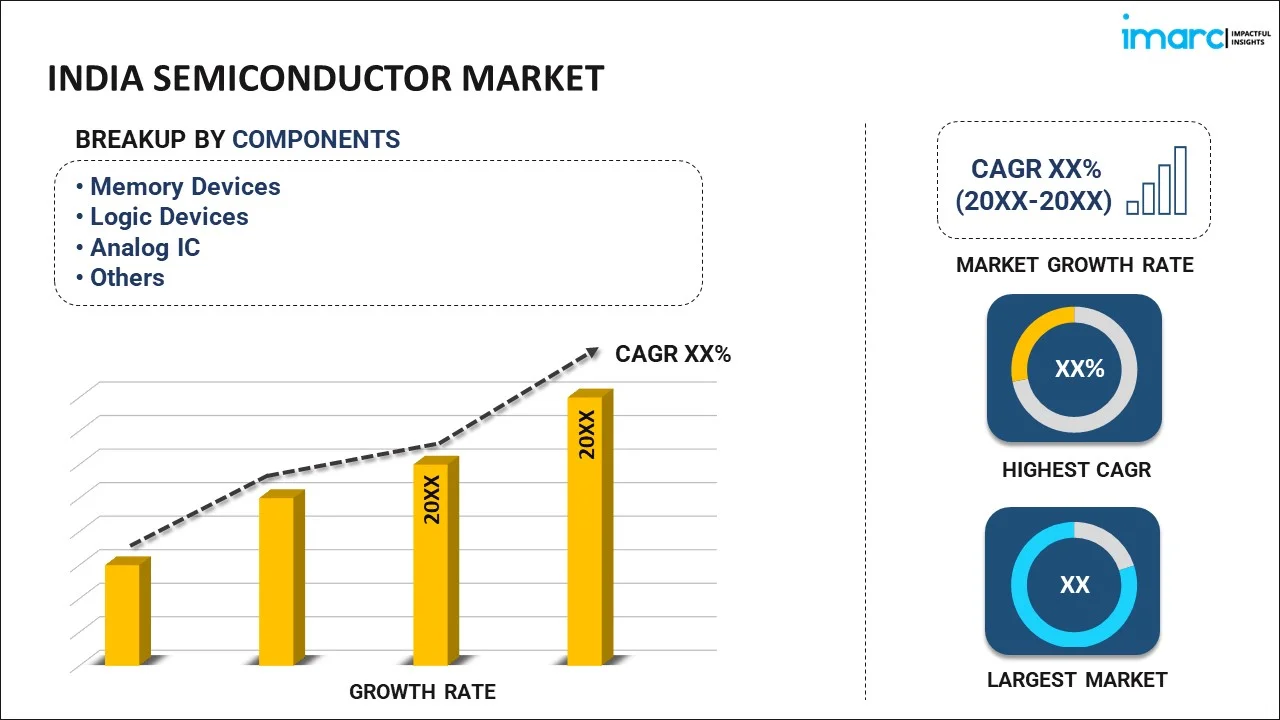Why India’s Chip Money Surge Unlocks Big Wins
India’s semiconductor boom draws billions, sparking market shifts and global eyes—here’s how to ride the wave.

India’s Semiconductor Boom Draws Billions
India’s semiconductor industry is no longer a quiet contender—it’s a roaring engine of economic growth, pulling in massive investments and reshaping global markets. As of May 14, 2025, verified reports from Bloomberg, Reuters, and government sources confirm billions in capital flowing into India’s chip sector, driven by strategic government policies, global demand, and private-sector ambition. This isn’t just a tech story; it’s a financial one, with stock prices, revenue projections, and market opportunities lighting up for investors and businesses. Here’s the breakdown of recent events, hard numbers, expert insights, and actionable steps to make your money work in this high-stakes game.
The Numbers Driving the Surge
India’s semiconductor push is backed by serious cash. The government’s $10 billion Production Linked Incentive (PLI) scheme, launched in 2021 and expanded through 2024, has catalyzed over $15 billion in committed investments by May 2025, per India’s Ministry of Electronics and IT (MeitY). Tata Electronics leads the pack, with its Dholera, Gujarat, facility—India’s first semiconductor fab—set to begin production by late 2026. Tata’s initial $11 billion investment has ballooned with a request for 80 additional acres to expand its 160-acre site, signaling confidence in scale, according to Reuters.
Other players are piling in. INOX Air Products announced a ₹300 crore ($36 million) investment for an 8-acre facility in Dholera to produce Electronic Specialty Gas (ESG), a critical component for chipmaking, per NICDC statements. Meanwhile, L&T Semiconductor Technologies, a fabless chip startup, opened a new office in Noida, aiming for a $10 billion fabrication plant by 2027 if it hits $1 billion in annual revenue, as reported by CNBC. These moves underscore a robust ecosystem taking shape, with Gujarat’s Dholera emerging as “Semicon City.”
Stock markets reflect the buzz. Tata Electronics’ parent, Tata Sons, saw its unlisted shares surge 15% in valuation on Indian bourses since January 2025, with analysts citing chip ventures as a key driver, per BSE India data. L&T’s stock (NSE: LT) climbed 8% year-to-date, buoyed by its semiconductor pivot. However, not all is rosy—Zoho and Adani Group paused their $700 million and $10 billion chip plans, respectively, due to challenges in securing tech partners, Reuters reported, causing a 3% dip in Adani Enterprises (NSE: ADANIENT) stock in early May.
Why Now? Global Demand Meets Policy Muscle
The semiconductor shortage of 2020–2023 exposed global supply chain vulnerabilities, pushing nations to localize chip production. India seized the moment. With global chip demand projected to hit $1 trillion by 2030 (McKinsey), India’s low-cost labor, vast engineering talent, and government incentives make it a magnet for investment. The PLI scheme offers 50% capital expenditure subsidies, while state governments like Gujarat provide land and tax breaks, per MeitY.
“India’s timing is impeccable,” says Arjun Patel, a semiconductor analyst at ICICI Securities. “As China faces export curbs and Taiwan grapples with geopolitical risks, India’s neutral stance and scale make it a safe bet for multinationals.” Patel points to Micron Technology’s $2.75 billion Gujarat plant, set to produce memory chips by late 2025, as proof of global trust. Micron’s stock (NASDAQ: MU) rose 12% in 2025, partly due to its India bet, per Bloomberg.
Yet, challenges loom. The Zoho and Adani pullbacks highlight India’s struggle to secure cutting-edge tech partners, a bottleneck that could slow progress. “Building a fab is one thing; mastering 5nm or 3nm processes is another,” warns Priya Sharma, an economist at HSBC. “India needs foreign expertise, and that’s where delays creep in.”

Market Ripple Effects: Who Wins, Who Watches?
The investment wave is reshaping India’s economy and markets. The chip sector is expected to create 600,000 direct and indirect jobs by 2030, per MeitY, boosting consumer spending and real estate in hubs like Gujarat and Uttar Pradesh. BSE’s Sensex index, up 10% year-to-date, reflects broader optimism, with tech and infrastructure stocks leading gains.
Globally, India’s rise could pressure competitors. Taiwan’s TSMC (NYSE: TSM) and South Korea’s Samsung (KRX: 005930) face no immediate threat, but their stock multiples—P/E ratios of 25 and 18, respectively—suggest investors are wary of long-term shifts. Meanwhile, US firms like Applied Materials (NASDAQ: AMAT), supplying chipmaking equipment, saw a 7% stock bump in 2025 as India’s fab projects ramp up, per Yahoo Finance.
For Indian investors, the real action is in ancillary sectors. Companies like Linde India (NSE: LINDEINDIA), supplying industrial gases for chipmaking, jumped 20% in stock value since INOX’s Dholera announcement. Infrastructure firms like Larsen & Toubro (NSE: LT) benefit from fab construction contracts, with L&T’s order book swelling 12% in Q1 2025, per its BSE filings.
Risks You Can’t Ignore
No boom is risk-free. India’s semiconductor ambitions hinge on execution. Delays in Tata’s Dholera fab or Micron’s plant could dent investor confidence, as seen in Adani’s stock wobble. Geopolitical tensions—especially US-China tech wars—could restrict India’s access to advanced equipment, a concern flagged by HSBC’s Sharma. Currency fluctuations also pose a threat; the rupee’s 2% depreciation against the dollar in 2025 raises costs for imported chipmaking tools, per RBI data.
Then there’s the talent gap. India produces 1.5 million engineers annually, but only 10% are trained in semiconductor design, says Nasscom. Scaling expertise fast enough to meet 2026–2030 production timelines is a gamble. “If India stumbles on skills or tech transfers, these multibillion-dollar fabs could become white elephants,” cautions Patel.
Your Money Now: Actionable Tips
Want to capitalize on India’s chip surge? Here are verified, practical moves based on current market data:
-
Stock Picks with Upside: Consider exposure to Tata Sons (unlisted, via wealth managers) or L&T (NSE: LT, ₹3,600, target ₹4,000 per ICICI Securities). Linde India (NSE: LINDEINDIA, ₹8,200) offers a niche play on chip gases, with a 15% upside projected by Motilal Oswal. Avoid Adani Enterprises until its chip plans clarify, given recent volatility.
-
ETFs for Diversification: The Nifty India Manufacturing ETF (NSE: NIFINDMFG) includes chip-adjacent firms like L&T and Bharat Electronics. It’s up 14% in 2025, per NSE, offering a safer bet than single stocks.
-
Global Plays: US equipment makers like Applied Materials (NASDAQ: AMAT, $220, target $250 per JPMorgan) or Lam Research (NASDAQ: LRCX, $950) benefit from India’s fab boom. Buy on dips for long-term gains.
-
Stay Liquid: With fab production still 12–18 months out, keep 20% of your portfolio in cash or short-term bonds to pivot if delays hit. RBI’s 6.5% repo rate makes fixed deposits a safe park.
-
Watch the Rupee: Hedge currency risk if investing globally. Use INR-based mutual funds to minimize forex losses, advises HSBC.
The Road Ahead
India’s semiconductor story is just beginning, but the financial stakes are already massive. Tata’s Dholera fab, Micron’s Gujarat plant, and INOX’s gas facility signal a sector ready to scale, backed by $15 billion in investments and counting. Yet, the Zoho and Adani pauses remind us that execution is everything. For investors, the opportunity lies in picking winners early—stocks like L&T, Linde India, or global giants like Applied Materials—while staying nimble for risks.
As markets shift and India carves its chipmaking niche, one thing is clear: this isn’t a trend to sleep on. Stay sharp with Ongoing Now 24.





